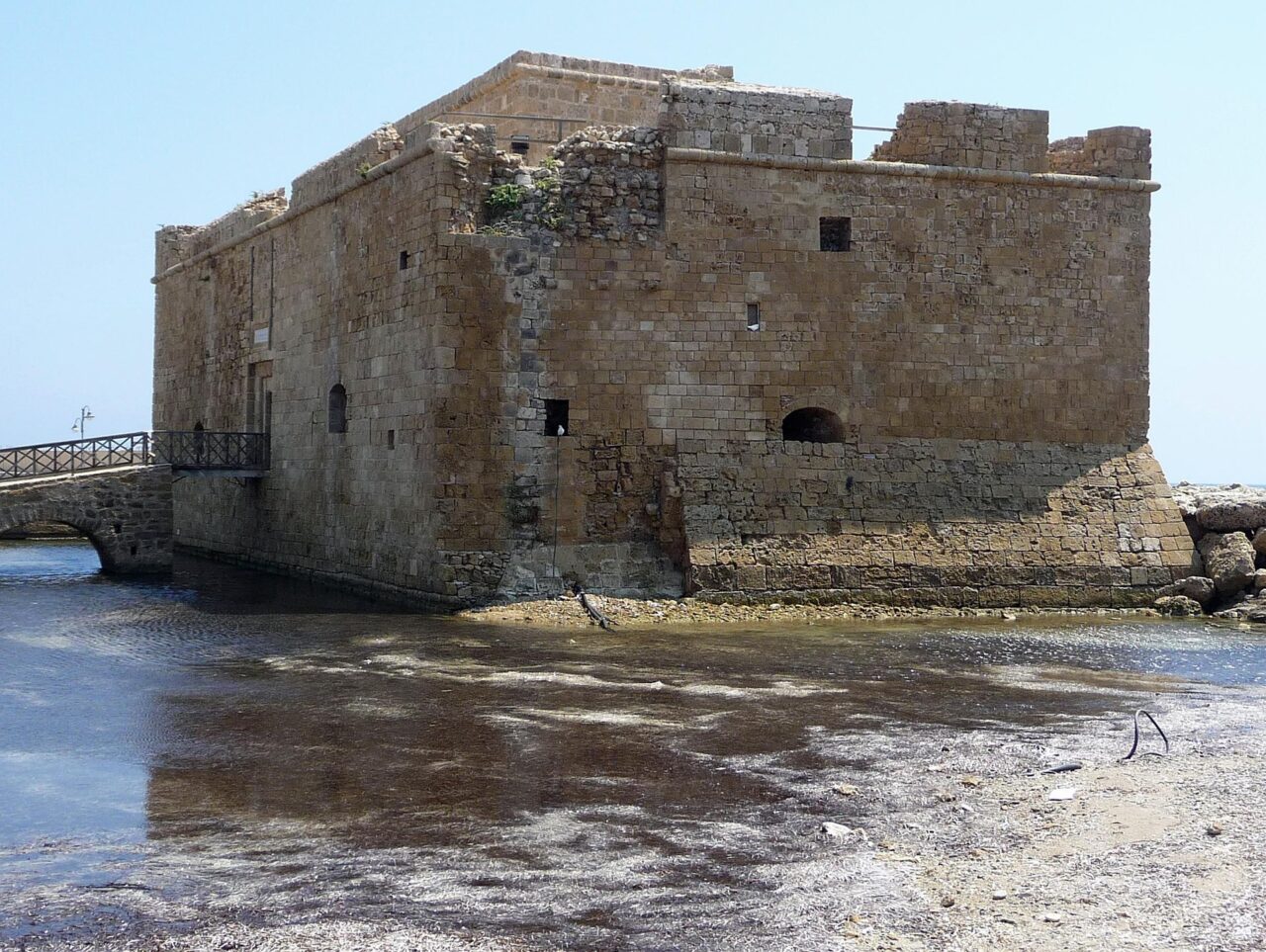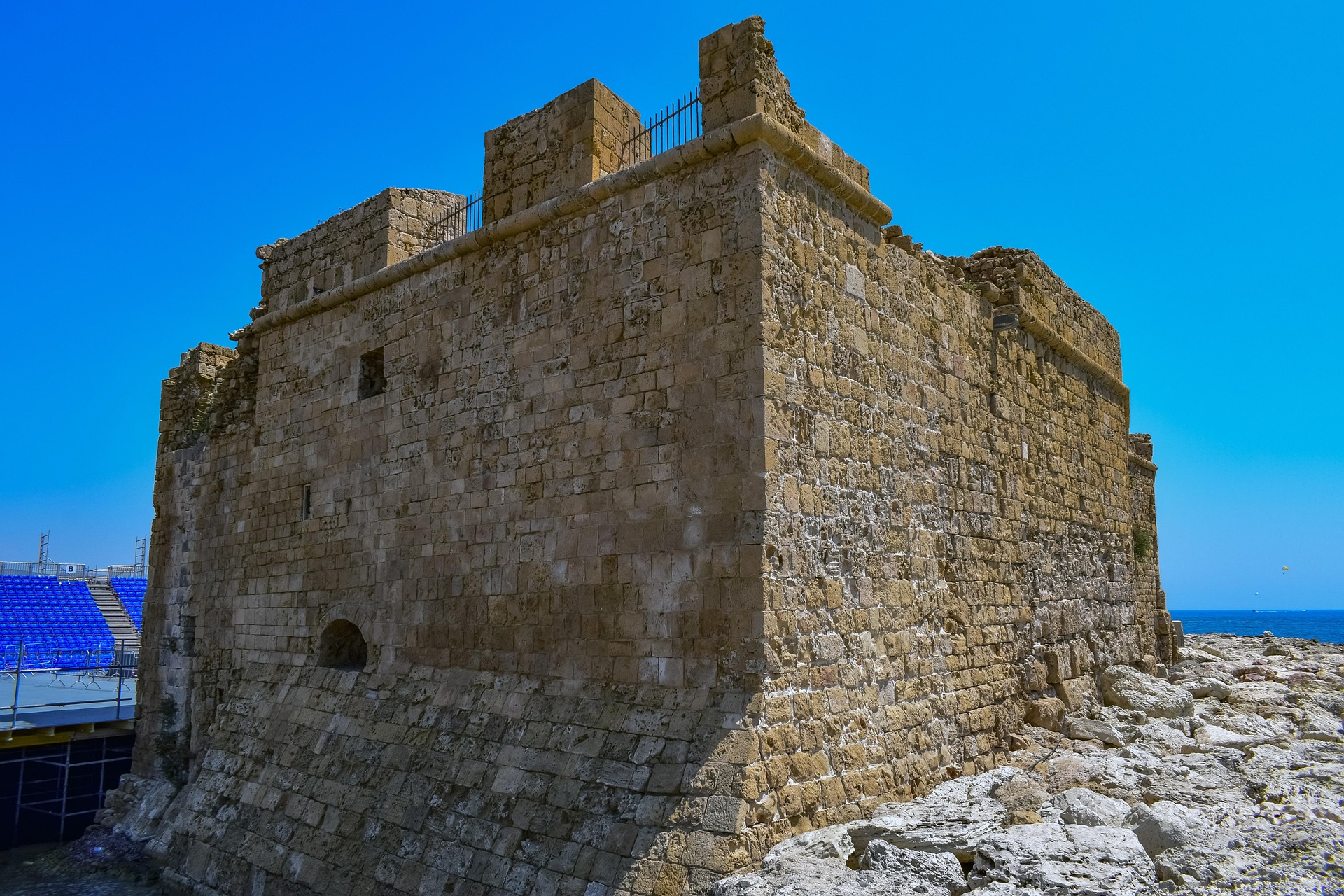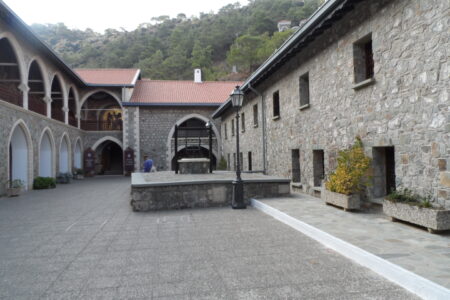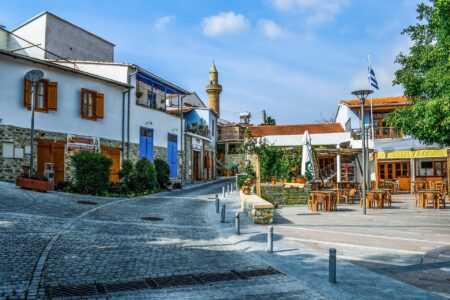Paphos Castle is not just an ancient fortress; it is a living testament to the shifting eras and civilizations of Cyprus. Located on the western side of Paphos Harbour, the castle once served as a crucial defensive structure, a prison, and even a salt depot. Today, it stands as a cultural center and one of the city’s premier tourist attractions.
Contents
Historical Overview
Byzantine Roots and Early Fortifications
Originally, a Byzantine fort was established at this strategically important location to protect the harbour entrance from invading forces, particularly during the 7th century when defensive structures were built to counter Arab raids. Nearby, there was also a fortress known as “Forty Columns,” which played a significant role in safeguarding the port.
Reconstruction in the 13th Century
After a devastating earthquake in 1222 brought down the old fortifications, the Lusignan family, a prominent feudal dynasty, decided to build a new castle at the beginning of the 13th century. Constructed using finely cut limestone, the new fortress was designed for maximum durability. Initially, the castle consisted of two towers connected by a robust wall, making it highly secure and difficult for enemies to breach.
The Genoese Siege and Subsequent Modifications
In 1373, during conflicts with the Genoese, the castle withstood a prolonged siege. Despite the valiant defense, the fortress eventually required repairs and was restored later in the 14th century to regain its defensive strength.
Venetian and Ottoman Periods
Fearing a Turkish invasion in 1570, the Venetians opted to dismantle the fortress to prevent its capture. However, after the Turks conquered Cyprus, the castle was restored in 1592 by the Turkish governor. It was during this period that the castle acquired much of its modern appearance. Under Ottoman rule, the fortress served military purposes: prisons were housed on the lower floors while the upper level featured a garrison mosque and positions for cannons.
The British Era and Modern Times
Following Cyprus’ transfer to British control in 1878, the castle lost its military function and was repurposed as a salt depot, with salt brought in from the Larnaca Salt Lake. In 1935, the building was declared a historical monument and has since been protected by the state. Today, the castle not only offers a glimpse into the past but also hosts cultural events and exhibitions.
Architecture and Features
Paphos Castle is characterized by its compact, yet robust two-story structure built of cut limestone. The main feature is a large square tower surrounded by an enclosed courtyard. A single entrance on the eastern side, accessed via an arched bridge from the harbour, underscores the fortress’s original defensive intent.
Inside, the castle’s design is both simple and functional. The ground floor boasts a spacious central hall with impressive stone vaults, and adjoining rooms once served as prisons and barracks. The upper floor, reached by a narrow staircase, once accommodated the garrison and a mosque. From the rooftop, visitors can enjoy breathtaking panoramic views of the Mediterranean Sea, the port, and the surrounding Troodos Mountains.
The thick walls, minimal windows, and arrow slits all testify to the castle’s purpose as a military stronghold. Even after centuries and changes in function, these features continue to evoke the atmosphere of ancient warfare.
Interesting Facts
-
Multiple Functions: Over its long history, the castle has served not only as a defensive fortress but also as a prison, salt depot, and today as a venue for cultural festivals and exhibitions.
-
Single Entrance: The design includes only one entrance, emphasizing its historical role as a secure and fortified structure.
-
Cultural Heritage: Since 1999, the castle has hosted an annual festival that transforms it into a stage for operatic and musical performances, highlighting its role as a cultural landmark.
-
The Ahmet Pasha Inscription: A Turkish inscription above the entrance commemorates the 1592 restoration, marking a significant chapter in the castle’s history.
Practical Information for Visitors
Today, Paphos Castle is open to tourists and offers a unique opportunity to explore Cyprus’ history and culture. Visitors can tour the ancient rooms and climb to the viewing platform for spectacular vistas of the city and sea.
-
Opening Hours:
-
Summer (April 16 to September 15): 8:30 AM – 7:30 PM
-
Winter (September 16 to April 15): 8:30 AM – 5:00 PM
-
-
Entrance Fee: Approximately €2.50, with group discounts available.
-
Getting There: The castle is conveniently located in the tourist area of Kato-Paphos, accessible by public transport or private vehicle.

Paphos Castle is a place where history comes alive in every stone. Its walls tell the story of ancient battles, shifting civilizations, and the resilient spirit of Cyprus. Visiting this fortress offers a journey back to the medieval era, coupled with unforgettable panoramic views, making it a must-see destination for every traveler.
















